#Toshio muramatsu
Text

THEY'RE IN THEIR FUCKING PJS
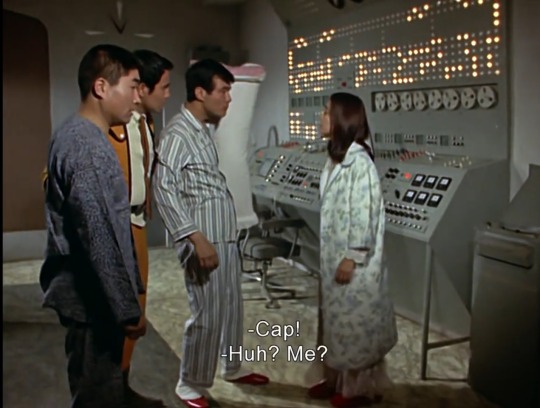
Of course Hayata is the only one in uniform, that's so like him. I bet he fucking sleeps in it.
#tokusastu#kaiju#gojiposting#toku#goji#ultraman#tsuburaya#mitsuhiro ide#shin hayata#daisuke arashi#akiko Fuji#Toshio muramatsu#sssp#science patrol#science special search party
186 notes
·
View notes
Text

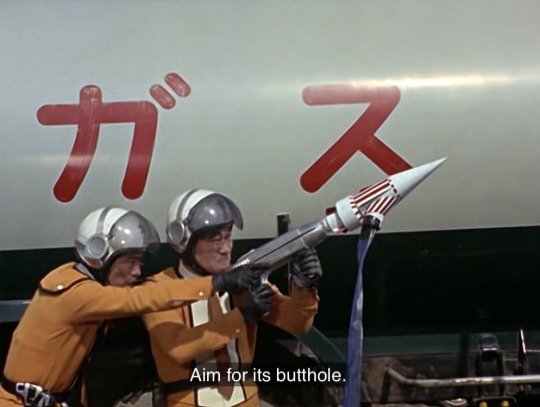
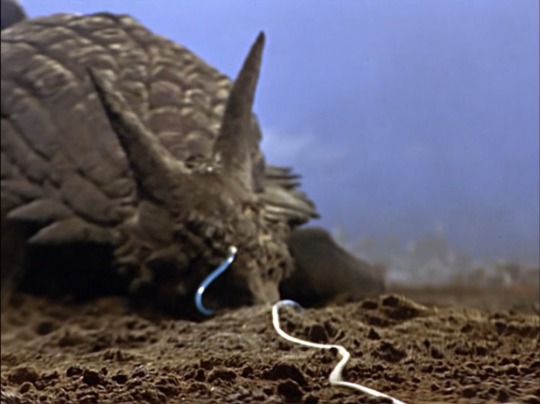
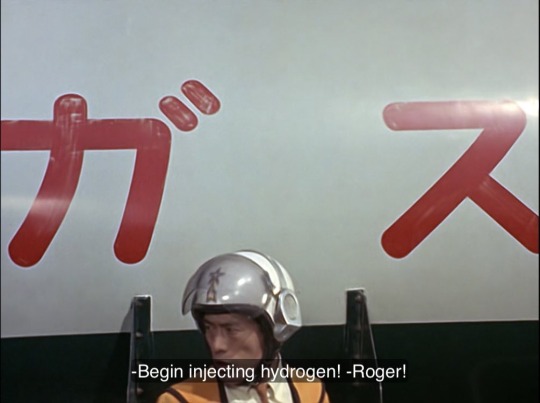

Please watch Ultraman (1966).
#ultraman#ultraman 1966#shin hayata#skydon#captain muramatsu#toshio muramatsu#daisuke arashi#originally posted these on Twitter#kyodai hero
82 notes
·
View notes
Text

Not to be petty but while the show came out in 66 it was not set in 66
It was set in 1993
1 note
·
View note
Text
Wait, Captain Muramatsu is 36 years old? Are you kidding me?
0 notes
Text

The Science Patrol is happy that it's Ultraman Day!
#Ultraman#Science Patrol#SSSP#Science Special Search Party#Captain Toshio Muramatsu#Mitsuhiro Ide#Daisuke Arashi#Shin Hayata#Akiko Fuji#tokusatsu#Tsuburaya Productions
67 notes
·
View notes
Photo
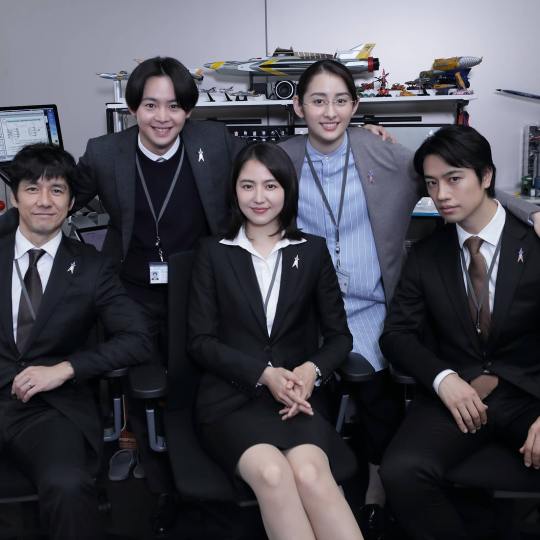

Science Patrol (Shin Ultraman 2022 vs Ultraman 1966) by 東宝MOVIEチャンネル
Ultraman 1966 - SSSP (Science Special Search Party)
Susumu Kurobe as Shin Hayata, the Ultraman
Akiji Kobayashi as Captain Toshio Muramatsu, the leader
Sandayū Dokumamushi as Daisuke Arashi, the marksman
Masanari Nihei as Mitsuhiro Ide, the inventor
Hiroko Sakurai as Akiko Fuji, the communications officer
Shin Ultraman 2022 - SSSP (S-Class Species Suppression Protocol)
Takumi Saitoh as Shinji Kaminaga, the Ultraman
Masami Nagasawa as Hiroko Asami, the analyst
Hidetoshi Nishijima as Kimio Tamura, the leader
Daiki Arioka as Akihisa Taki, the physicist
Akari Hayami as Yumi Funaberi, the biologist
#science patrol#shin ultraman#takumi saitoh#masami nagasawa#hidetoshi nishijima#daiki arioka#akari hayami#ultraman 1966#susumu kurobe#akiji kobayashi#sandayū dokumamushi#masanari nihei#hiroko sakurai#tsuburaya productions#toho movie#ultra series#ultraman#sssp#japan
82 notes
·
View notes
Text


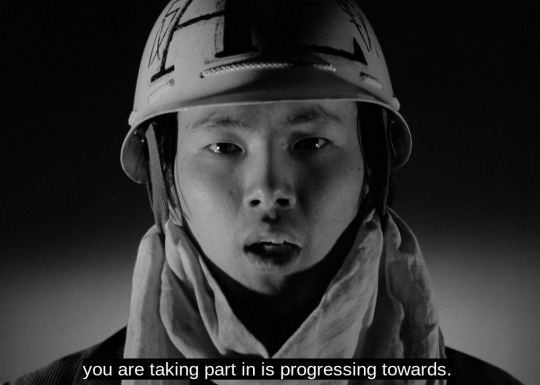
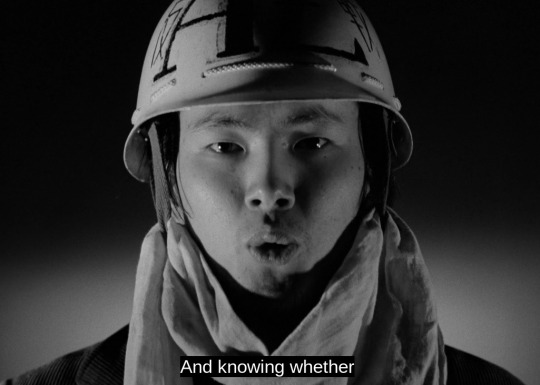
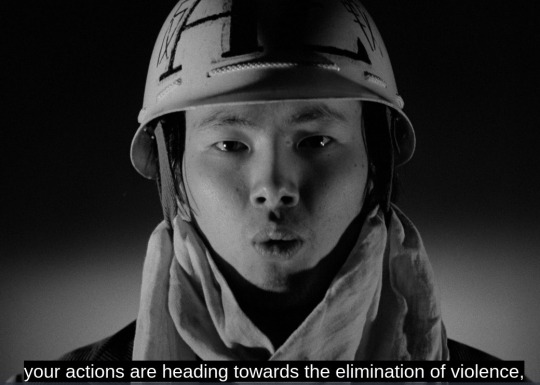


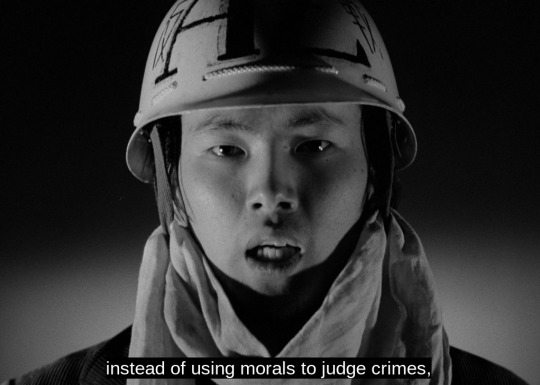

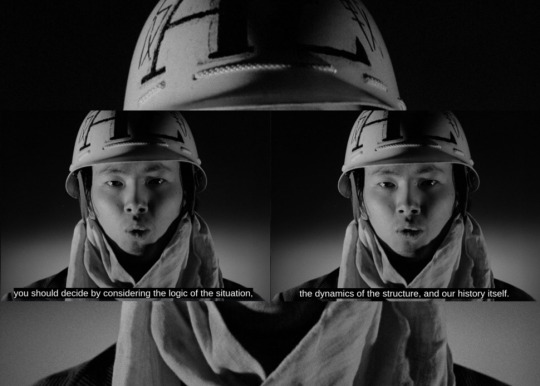
Funeral Parade of Roses (1969) dir. Toshio Matsumoto
#film stills#black and white#funeral parade of roses#toshio muramatsu#activism#peace#1969#film quotes
15 notes
·
View notes
Text
Rise of Ultraman #1 *spoilers*

So being an Ultra Series fan since childhood, especially the original 1966 Ultraman and recently a fan of Ultra Q which is the first in the Ultra Series, I quickly got my hands on the first copy of Marvel’s Rise of Ultraman.
Okay, this is from my point of view and I know very well that different people have different taste and expectations but I guess I set mine a little too high. First of all, let’s go through the main characters that we see in this issue.
Shin Hayata (Ultraman)

Apparently Hayata hasn’t join the Science Patrol yet at this point for failing the test and unlike the original Hayata where he’s more of a calm demeanor, this one’s a bit cocky akin to that of Top Gun’s Maverick which tends to agitate Captain Muramatsu, among other reasons which are not yet explained.
Captain Toshio Muramatsu
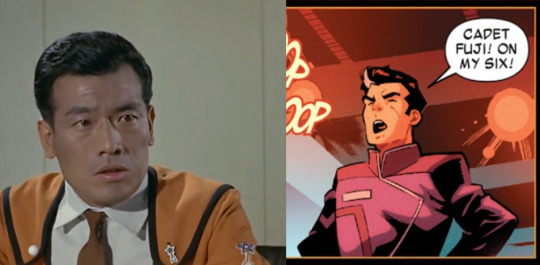
Probably the most “chill” Captain of the Ultra Series that I’ve watched as he’s more a scientist than a military officer, as the Science Patrol was more of a research team to investigate and learn more about the extra-terrestrials but in this issue, I guess they’re more militaristic so he’s a bit on the edge and uptight, in a sense that he’s extremely particular about protocols and stuffs.
Akiko Fuji

The cute, lively and bubbly girl of the Science Patrol which probably caused a lot of Ultra fan boys to have a crush on her. Unlike Hayata and Muramatsu whose personalities are different now, hers is more or less the same but more serious.
Dan Moroboshi (Ultra Seven)

He appeared briefly so I can’t tell much about his personality differences with the original one but at least his uniform is exactly the same as the original, unlike the Science Patrol, which is a bit disappointing but I guess darker color is more realistic than the orange, kind of like Wolverine’s yellow spandex I guess.
But anyway, what I’m confused about this guy is that unlike Hayata, Muramatsu and Fuji which characters are brought forward to 2020, Moroboshi is still in 1966 and what’s confusing is that although he wears the unmistakable uniform of the Ultra Guard, he pilots the Science Patrol’s Jet VTOL.

What does an Ultra Guard member doing piloting a Science Patrol jet? If the Science Patrol existed in 1966, shouldn’t Hayata, Fuji and Muramatsu existed in that timeline as well? But if they’re here in 2020 then who were the original Science Patrol members? Dan later crashed his jet and encounters Ultraman. But isn’t Dan supposed to be Ultra Seven? I don’t know what’s happening but I’m definitely curious to find out in the following issues.

As an Ultra fan, I feel that it kind of uses the names of the original characters but lack the soul and spirit of said characters. Since it’s Marvel so naturally the dialogues, characters and stories feels more American than Japanese. So it feels like I’m reading an Ultraman Powered comic than the Original Ultraman. That being said, I wonder why Marvel didn’t do an Ultraman Powered comic instead? I love that American version as well, it’s unique and awesome in its own way and has tons of potential to be the next Pacific Rim.

Seems that Boom Studios is the only one that is able to capture the essence of the original Power Rangers into the modern world of today than Marvel does for Ultraman. A reason Power Rangers is successful I think it’s because the comic is based on the American version of Kyōryū Sentai Zyuranger instead of Kyōryū Sentai Zyuranger itself. So if they were to make a Kyōryū Sentai Zyuranger remake with an American context I think the result would be what you see here in Rise of Ultraman.


Don’t get me wrong, it’s not terrible but it’s just a matter of expectations. Perhaps for non-Ultra fans, it might be awesome to see a new kind of superhero which they have never seen before in the west. But I guess, it’s still early to tell since it’s only the first issue. I will still look forward to the following issues with great interest to see where the story is going.
#ultra series#ultra q#ultraman#ultraman 1966#ultra seven#ultraman powered#ultraman the ultimate hero#shin hayata#toshio muramatsu#dan moroboshi#ultra guard#science patrol#pacific rim#marvel#power rangers#super sentai#boom studios#wolverine#rise of ultraman#kyōryū sentai zyuranger
21 notes
·
View notes
Photo


Today’s Ultra Trivia:
In an early outline for Return of Ultraman, there were plans on bringing Ultraman’s Captain Muramatsu and Hayata into the show. Both men would appear to have retired from their work in the Science Patrol, Muramatsu instead becoming an adviser for the Earth Defense Force while Hayata became an adventurer.
Sources: Ultraman Continued 1 & 3, Return of The Return of Ultraman (Tatsumi Publishing, 1999)
23 notes
·
View notes
Photo

11 notes
·
View notes
Photo
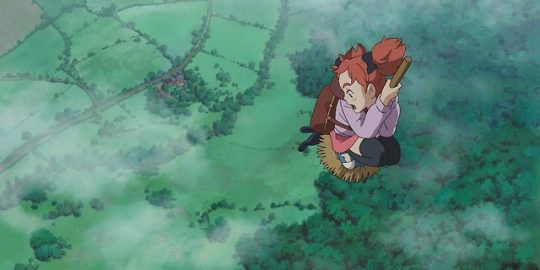
Mary and the Witch’s Flower (2017, Japan)
It has long been time for the students of Hayao Miyazaki and Isao Takahata to succeed their old masters. With Hiromasa Yonebayashi’s Mary and the Witch’s Flower, their legacy need not stay with Studio Ghibli. This is the debut feature of Studio Ponoc – derived from the Serbo-Croatian “ponoć”, meaning midnight, as in to signal a new beginning – and it is as strong a film as could be anticipated with the talent present. The studio was co-founded and is staffed by many Ghibli alumni. Ponoc co-founder Hiromasa Yonebayashi, at forty-four, is still relatively young, and has directed Arrietty (2010) and When Marnie Was There (2014) – Mary is Yonebayashi’s best film of that fantastical trio and the most focused, most artistically interesting. At forty years old, producer Yoshiaki Nishimura is also a youngster, having worked on 2013′s The Tale of the Princess Kaguya and Marnie. Is Mary derivative of other works of fantasy films and literature? Is it derivative of previous Studio Ghibli movies? Certainly. But as an audience-pleaser, this is candy for the imagination as satisfying as can be.
The film comes at the most interesting time in animation history. Animation in film, once the domain of the United States and Eastern Europe (the latter has become less important since the fall of the Soviet Union), invited challenges from Japan – spearheaded by Studio Ghibli – in the 1980s. With Ghibli in the last decade undergoing personnel changes and financial troubles, cash-strapped transnational animation productions in Europe and the Americas have assumed the mantle to counter the decay of major U.S. studio animation. If Studio Ponoc is Ghibli’s spiritual successor, its opening chapter into the history of animated film is one that makes several gracious nods to the past – with all the benefits and drawbacks that includes.
I will have to start writing on that book some day.
Somewhere in pastoral Britain, Mary Smith dislikes her red hair, waiting for her parents at her Great Aunt Charlotte’s mansion, and the teasing boy, Peter, she sees every day. One afternoon, led by Peter’s cats Tib and Gib, she encounters a blue flower that grants magical powers. Eventually this will lead Mary – along with Tib, who is searching for the lost Gib – to a witches’ college concealed up in the clouds, apparently accepting students without an application process or background check (I doubt Mary has a criminal record, but you never know!). There, at the Endor College for Witches, she meets a cast of characters including headmistress Madame Mumblechook, chemistry professor Doctor Dee, and a talking rodent named Flanagan who manages the college’s broomsticks (the broomsticks seem to be somewhat sentient). Mary is entranced by the college, enjoying the fact that, “red-haired witches have always been supremely superior.” But like Dorothy realizes when landing in Oz, Mary realizes there are more twisted machinations behind this fantastical place than at first glance.
Adapted from the 1971 children’s novel The Little Broomstick by Mary Stewart by screenwriters Yonebayashi and Riko Sakaguchi, there are certain plot strands left dangling without apparent reason, as if they were trying to compress the movie. After the opening in medias res, Mary is said to be waiting on her parents as if that is supposed to be a Very Important Development. Is that contributing to her boredom or personality in any way? The movie never says. Mary’s scattershot tour at Endor College has her reacting to what she sees, rather than asking more questions of Madame Mumblechook and Doctor Dee. As happens too often in modern animation everywhere, the moment Mary is introduced to a worldbuilding concept, she restates the statement as a brief question (after being explained that Tib is her Familiar, she predictably asks, “A familiar?”). After a while, she should be a little less gobsmacked and ask about the curriculum, the history of the school itself, and how all this magic works in the first place. Introduced as the redhead witch with once-in-a-century raw talents, her final decision – even though it makes some sense given what she has gone through – seems rushed and maybe too final. Not all Ghibli heroines were created equal, with rich characterization and a traceable change in their personality from the opening to the closing minutes. The supporting characters and, most importantly, Mary never feel as dynamic as Yonebayashi and Sakaguchi want her to be and this above all – not how original or unoriginal Mary and the Witch’s Flower is – prevents the film from attaining greatness.
That should not be read as a broadside against Mary, the character. Though she becomes a sort of Chosen One (I just yawned while typing that), she remains an unremarkable child who loves animals and her family, never precocious or overly sassy. She is a pleasant girl, despite an initial irritation towards Peter – calling a red-haired person a “red monkey” probably isn’t the brightest idea. The screenplay, lacking internal personal conflict, makes a greater connection to the titular character improbable.
Comparisons between Mary and other pieces of literature and film like Kiki’s Delivery Service have been everywhere, and perhaps these comparisons are unfair (though Kiki displayed a greater interest in exploring its main character’s motivations, sources of Kiki’s depression, and how she responds to it). Yonebayashi’s newest film feels more like a composite of fantasy tropes and Ghibli conventions, not necessarily a direct knock-off of any single film – the witches’ college is a more technologically savvy, shrubbier Hogwarts; the film’s take on magical ethics will be valuable for younger children; and there are visual parallels to Miyazaki’s twenty-first century movies. Yet, Mary and the Witch’s Flower – recall that the source material predates the aforementioned influences, so Yonebayashi was not handcuffed to those pieces – adheres closely enough to all of those sources of inspiration to serve as a gateway for younger viewers who will want more. Mary and the Witch’s Flower is a promising start for the Ponoc upstarts, so may those younger viewers be treated to much more.
Leading a team of hundreds of animators is supervising animator Takeshi Imamura, who has had a distinguished career in setting the Studio Ghibli aesthetic. Beginning his Ghibli career with Porco Rosso (1992) as an inbetweener, some of his later credits include animation director on Howl’s Moving Castle (2004) and Tales from Earthsea (2006), and also serving as key animator on non-Ghibli movies like The Boy and the Beast (2015) and Your Name (2016). Imamura and his team of animators provide exactly what one might expect from a Ghibli production. Bathed in bright colors, Endor College is a marvel of animated invention making full use of image depth and scope. It is an acid trip of a sequence. But unlike the stereotypical acid sequence in animated film, it is not disturbing or horrifying, but welcoming (the comedic writing is brilliant in these few minutes). The watercolor-like surroundings of the British countryside are reminiscent of Yonebayashi’s previous movies, albeit more shrouded in fog than those films.
Mary’s character design, with her exaggerated facial expressions and especially hair movement, displays the massive advantages that hand-drawn animation has over computerized animation in having character design change the tone of the film and express personality.
Composer Takatsugu Muramatsu (When Marnie Was There, 2017′s Lu Over the Wall) crafts his score around the piano-heavy and string-flowing “Mary’s Theme”, but the real star of this recording is the hammered dulcimer introduced in “Night Flight”. The modern dulcimer, with its five-octave range, has rarely been used to such an extent and with such prominence in a film score (“Essence of the Spell”, an action cue played late in the film, is Muramatsu’s grandest statement of intent for the dulcimer). If there is anything in this film that departs totally from the Ghibli formula to rousing success, it is certainly Muramatsu’s compositions – reimagining variations of his themes to an extent rarely seen in, say, a Ghibli movie. Mary and the Witch’s Flower concludes with the catchy original song “Rain”, sung and composed by J-Pop band Sekai no Owari.
Upon completion of Mary and the Witch’s Flower, Yonebayashi and Nishimura invited their former Ghibli colleagues for a preview screening. The three Ghibli co-founders had their own responses to the film. Hayao Miyazaki declined to attend, and his reasons are a little suspect (maybe he’s too busy working on How Do You Live? for its release sometime between 2019-2021, but all he basically said to the two was, “you worked hard”). Toshio Suzuki praised the film, noting the film’s artistic freedom from the restrictions in place at Ghibli. Isao Takahata also liked the movie yet sarcastically referenced his box office history to say: “…the fact that I like it means that its success might be in danger.” Thankfully for Ponoc, Takahata’s approval did not spell financial disaster for the fledgling studio as Mary and the Witch’s Flower outgrossed Marnie, unadjusted for inflation (Marnie grossed more adjusted, but Mary has not completed its theatrical run outside Japan yet).
Mary and the Witch’s Flower is as entertaining and bewitching as our childhood flights of fancy – finding wonder in fantastical stories, the blue and red hues of dusk after a long day. The storytelling’s charms are fleeting; those who have seen many Studio Ghibli features might be distracted by the artistic callbacks. One film, no matter its quality or lack thereof, does not and should not define a movie studio. For Studio Ponoc, their inaugural film has provided the foundations needed to mount its claims to perhaps become one of the world’s most important animation studios. That day, if it arrives, is a long way off. And if it does, may the studio reach that milestone on its own terms.
My rating: 7/10
^ Based on my personal imdb rating. My interpretation of that ratings system can be found here.
NOTE: This review was based on the version with Japanese audio and English-language subtitles. I cannot comment on the English-language dub for those who prefer that option.
#Mary and the Witch's Flower#Hiromasa Yonebayashi#Yoshiaki Nishimura#Studio Ponoc#Riko Sakaguchi#Takeshi Imamura#Takatsugu Muramatsu#Sekai no Owari#Mary Stewart#My Movie Odyssey
4 notes
·
View notes
Photo

What Studio Ponoc’s debut could mean for Studio Ghibli’s uncertain future.
The last four years have been confusing times for Studio Ghibli fans and anime enthusiasts in general. First, in 2013, legendary director Hayao Miyazaki, who is also one of Ghibli’s co-founders, announced his retirement following the release of his film The Wind Rises. The studio still co-produced the computer-animated series Sanzoku no Musume the following year, but then a few months later another co-founder, Toshio Suzuki, declared the company would take a “brief pause” to restructure in the wake of Miyazaki’s departure — which, in turn, lead to speculation about the company’s future and whether they would ever produce animated feature films again.
In 2015, lead producer Yoshiaki Nishimura, along with several staff members, left Ghibli and founded Studio Ponoc. And now this year sees the release of their first movie, Mary and the Witch’s Flower. The animated feature is based on Mary Stewart’s novel “The Little Broomstick,” which tells the story of a young girl who, led by a black cat named Tib, finds a mysterious magic flower and a broomstick in the woods. The broomstick takes her to Endor College, where nothing is as it seems.
Mary and the Witch’s Flower was helmed by Hiromasa Yonebayashi, who previously directed Ghibli’s The Secret World of Arrietty and When Marnie Was There. He also wrote the screenplay with Riko Sakaguchi, who previously scripted Ghibli’s The Tale of the Princess Kaguya. Nishimura is credited as producer, and other Ghibli collaborators such as music composer Takatsugu Muramatsu (When Marnie Was There) are also part of the team.
Meanwhile, both Studio Ghibli and Miyazaki have still been active in the past couple of years. Ghibli co-produced the 2016 Academy Award nominee The Red Turtle, and Miyazaki is working on a 12-minute short film called Boro the Caterpillar (his first approach to CG animation) and confirmation earlier this year that he is on the road back out of retirement working on a new feature length film with the studio. But the future of the animation house remains undefined, which makes the prospect of a Ghibli alumni-produced film even more promising.
When Miyazaki announced his retirement, both fans and the media took the news with some skepticism. It wasn’t the first time the filmmaker talked about calling it quits, and even he was aware of the frequency of the comment, to the point that he clarified that “this time, I mean it.” Although Miyazaki’s relationship with work is complex — his idea of retirement is to keep creating, only without the pressure of a deadline and to maybe, maybe have a free weekend every now and then — part of what granted more credit to his statement was Ghibli stopping production.
Even though Ghibli’s pause ultimately resulted in the departure of several staff members and the creation of Ponoc, this crossroad was a point that the company would inevitably reach with or without Miyazaki’s retirement. Unlike other animation houses, Ghibli usually retained a large portion of full-time staff, which translated to nearly considerable annual personnel expenses. While Ghibli is far from bankruptcy, part of its economic balance is intimately linked to the financial success of Miyazaki’s projects. Yonebayashi’s When Marnie Was There grossed just $34.1M, which is a very respectable box office revenue but doesn’t quite compare to the usual take for a Miyazaki film, which often topped $100M. Whether Miyazaki decided to retire early or later, the studio would eventually have to make important changes in the way it operates.
Moreover, the generational gap is closing in on the studio as well. Ghibli’s founders, including Miyazaki, Suzuki, and Isao Takahata, are well into their golden years (76, 68, and 81, respectively), and the company celebrated its 32nd anniversary last June. At Ponoc, Nishimura is only 39 and Yonebayashi is 44, and like Takahata and Miyazaki in Ghibli’s heyday, both have considerable experience in filmmaking (Yonebayashi also worked as an animator on Princess Mononoke, Spirited Away, and many others, while Nishimura produced Howl’s Moving Castle, The Tale of Princess Kaguya, and When Marnie Was There).
But it’s not only their (relative) youth or their professional credentials that leads to think that Ponoc and this second-generation of Ghibli alumni might help carry on the animation house’s tradition. Mary and the Witch’s Flower also seems to share some of Miyazaki’s trademark themes and motifs, such as a young female leading character and humanity’s relationship with nature. Likewise, the company’s name is the Croatian word for ‘midnight’, which has been interpreted as “the beginning of a new day,” in similar fashion as Ghibli’s.
While it is still early to determine the full success of Mary and the Witch’s Flower and Studio Ponoc — the movie did open pretty well in Japan last month — there is reason to believe that they might be the new wind blowing life into Studio Ghibli’s legacy in the middle of an uncertain future.
Story by Karen Gomez filmschoolrejects
507 notes
·
View notes
Photo
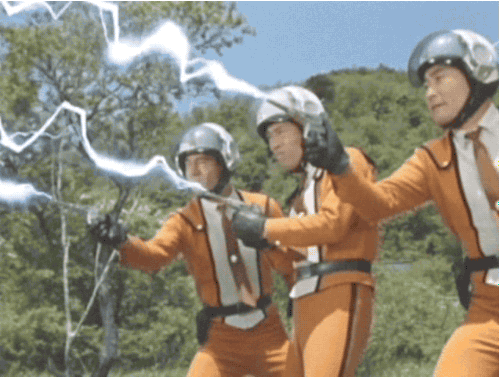
ZAPITY ZAP ZAP!
#Ultraman#Science Patrol#Science Special Search Party#SSSP#Mitsuhiro Ide#Captain Toshio Muramatsu#Daisuke Arashi#tokusatsu#Tsuburaya Productions#dream job
81 notes
·
View notes
Photo

Shin Ultraman - Epic and Nostalgic! 10/10!
Shin Ultraman finally arrives in my country for a special two days screening as part of ODEX Film Festival - Anime Matsuri. Was luck enough to get a seat even though it’s at the front row as the tickets were selling out fast!
Words can’t describe what I feel, it’s epic and nostalgic. It’s like watching something familiar yet fresh and new. The characters, the fight scenes, the soundtrack, the atmosphere, the cinematography is just awesome.
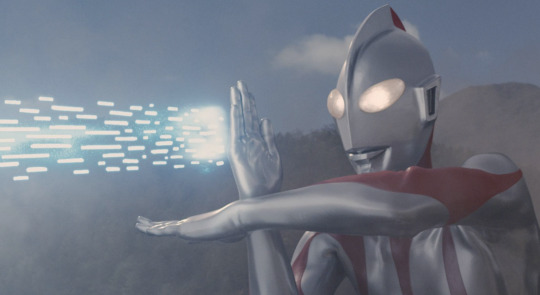
The producers stayed true to the original classics in many aspects with some minor changes to make it more realistic. I actually like that you can feel the weight and bulkiness of Ultraman and the Kaijus, like Pacific Rim.

Masami Nagasawa’s character never fails to crack me up in every drama and film she’s in. She has similar vibes as Akiko Fuji, with similar level of energy, mannerism and sarcasm but with a touch of badassery.

Hidetoshi Nishijima plays the cool headed Captain like Muramatsu Toshio. Like every drama and film he’s in so far, he has that commanding presence and seriousness which makes you think twice about getting on his bad side.

Takumi Saitoh plays Ultraman himself and like Shin Hayata, he too is a man of few words and his opposite personality with Masami Nagasawa’s character is fun to watch like seeing Hayata and Fuji interacting.
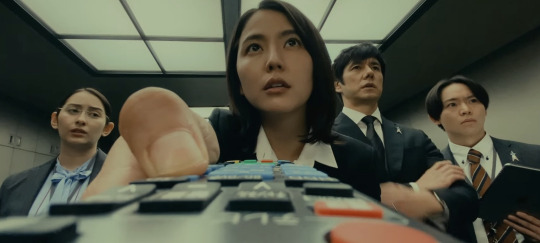
Daiki Arioka and Akari Hayami plays the team’s geek squad like Mitsuhiro Ide, the brains behind the operation. I actually like the team’s chemistry, like Ultraman 1966, there are some comedic moments as well.
I hope you’ll be able to watch it in your country soon one day and see how spectacular it is! After seeing this and Shin Godzilla, I have confidence that they will nail Shin Kamen Rider too. Hopefully, we’ll able to see that next year!
Seeing Japan putting together it’s own Tokusatsu Cinematic Universe is exciting! The remakes are like Christopher Nolan’s Dark Knight trilogy, trying to make it more cool and realistic. That’s all I can say without spoiling!

#shin ultraman#ultraman#ultraman 1966#takumi saitoh#masami nagasawa#hidetoshi nishijima#daiki arioka#akari hayami#tsuburaya productions#shin godzilla#shin kamen rider#japan#tokusatsu#pacific rim#kaiju
10 notes
·
View notes
Text



Funeral Parade of Roses (1969) dir. Toshio Matsumoto
8 notes
·
View notes
Photo

Ide violating just about every rule of firearm safety known to man.
#Ultraman#Science Patrol#Science Special Search Party#SSSP#Shin Hayata#Akiko Fuji#Daisuke Arashi#Captain Toshio Muramatsu#Mitsuhiro Ide#tokusatsu#Tsuburaya Productions#kids: don't try this at home!
48 notes
·
View notes